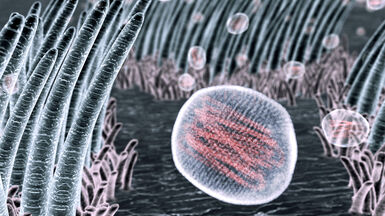Understanding avian influenza pandemic drivers crucial in reducing risks to human health
In a joint report released today, the European Centre for Disease Prevention and Control (ECDC) and the European Food Safety Authority (EFSA) outline the contributing drivers for influenza A(H5N1) viruses to acquire the ability to spread efficiently among humans, thereby increasing their pandemic potential. The report also addresses which mitigation measures could be implemented in animals and humans to reduce the risk to human health.
The report examines intrinsic drivers related to virus characteristics or host susceptibility. It also discusses extrinsic drivers which may increase exposure of mammals and humans to avian influenza viruses, thereby stimulating mutation and adaptation to mammals. Such drivers include the ecology of host species such as wildlife, human activities like farming practices and use of natural resources, climatic and environmental factors.
Influenza viruses remain prevalent among wild bird populations in the EU/EEA, leading to significant illness and death in birds. Transmission between bird and mammal species has been observed, including in fur animal farms where outbreaks have been reported. Angeliki Melidou, ECDC Principal Expert on Respiratory Viruses, said:
“Transmission from infected birds to humans remains a rare event, with no confirmed human infection identified in the EU/EEA. Nonetheless, the potential for avian influenza viruses to adapt to humans and cause a pandemic remains a concern. Ongoing vigilance, preparedness efforts and an increased understanding of underlying drivers is therefore crucial”.
Key options for actions include enhancing surveillance targeting humans and animals, ensuring access to rapid diagnostics, promoting collaboration between animal and human sectors, and considering the implementation of preventive measures such as vaccination of poultry.
Effective communication to different involved target audiences should be emphasised, as well as strengthening veterinary infrastructure, enforcing biosecurity measures at farms, and reducing wildlife contact with humans and domestic animals. Consideration of spacing between poultry and fur animal farming, especially in areas with high waterfowl density, could be given for effective risk reduction.
Read the report
Surveillance and monitoring
Drivers for a pandemic due to avian influenza and options for One Health mitigation measures
Avian influenza viruses (AIV) remain prevalent among wild bird populations in the European Union and European Economic Area (EU/EEA), leading to significant illness in and death of birds.






